|
30th December 2021 Thursday afternoon gaming on Board Game Arena continued with Dice Hospital. Doctor, doctor, please Oh, the mess I'm in Doctor, doctor, please Oh, the mess I'm in Mismanaging your hospital in Dice Hospital will definitely lead to a big mess! What's in a game?
The component quality in Dice Hospital is all round good. The tiles are study and cards are of the expected quality. The game's 60 or so dice are plastic but with well rounded corners and satisfying to roll. Finally, all the meeples are stylised after medical staff, it's a nice touch and appreciated, they're made of wood too! Good stuff. All of the art for the different departments on the hex tiles is quite small but also well detailed and depicts a variety of different medical equipment and hospital furniture, I quite like it. The specialist cards have headshots of doctors, it's sort of average artwork but on the hand, they look like medical staff, what more could you want? Besides, how much more exciting could you make the portrait of a urologist look! We found the game's iconography initially a little confusing but after a couple of references to the rulebook, it was always sorted out. None if it's a dealbreaker. How's it play? Setup
On to play Dice Hospital is played over 6 phases, some of these phases are completed in turn order and some can be completed simultaneously.
Endgame Play continues until 8 rounds have been completed. Upon reaching the end, players calculate their final scores, this includes: VPs for discharging patients over the 8 rounds. +1 per unspent blood bag. -2 per fatality token acquired. Scores are tallied, highest score wins. Overall
As well as randomly determining which improvements appear, I like how the game makes use of dice as both a randomiser and a resource to be managed. Using dice value to gauge health levels and colours to represent different types of malady is innovative and great. There's a lot of good gameplay in Dice Hospital and a lot to like. Figuring out how to strike balance the hospital's different needs, requirements and aspects is a satisfying challenge. In this regard, the game's 2-tier drafting mechanics work well, drafting patients that are easier to heal means going later when drafting hospital improvements, that's a good balancing mechanic with meaningful decisions. There's also a higher level of play at work here, if you can anticipate which patients/improvements other players are looking to acquire, you can either try and either deny them what they want or make it easier to get what you want. For example, if no one else wants a red doctor, then going last in the improvement drafting phase is not a problem. Knowing what and when to draft is probably the single most important aspect of the game, using those combinations of special abilities to heal multiple patients at a time is vital. It's also contextual, depending on the colour of patients and improvements appear and what a player already has in their hospital. Players may find themselves having to reappraise their strategy from turn to turn. Willingness to trash an improvement for a blood bag can also be a powerful play, used right, blood bags can provide much more than a single VP. Luckily, the game provides fairly good opportunities to combo departments and specialists off each other, especially toward the latter half. However, getting that balance wrong leads to sub-optimal play, having to many departments leaves them unused and too many specialists means they just do nothing. Even though it's an abstract dice game, it genuinely feels a bit like you're running a hospital, having to try and find ways to treat and discharge patients before the next influx of unending patient. This is not a coincidence. Players start the game with 3 patients and acquire 3 more every round, this means by the end of the 3rd round, they'll have filled all their wards (Provided they haven't already discharged any patients.), as a consequence, players will need to discharge 3 patients a round just to avoid sending some to the morgue. Thanks to the scoring though, there's a wrinkle here. Discharging patients in drips and drabs doesn't score many VPs. Players will actually want their patient numbers to build up a bit and discharge as many of them at once as possible to optimise scoring. It's a another balancing act and it all combines to make Dice Hospital a good game. If you like worker placement mechanics, blended with a bit mid-complexity, light randomness, meaningful choices and almost engine building elements; then Dice Hospital is worth a try. One I found an enjoyable experience.
0 Comments
Leave a Reply. |
AuthorI play, I paint. Archives
March 2024
Categories
All
|


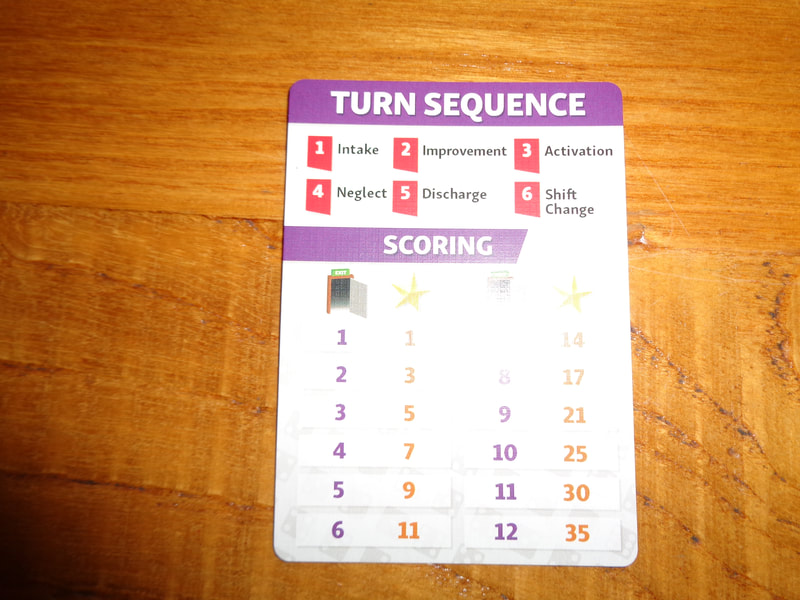
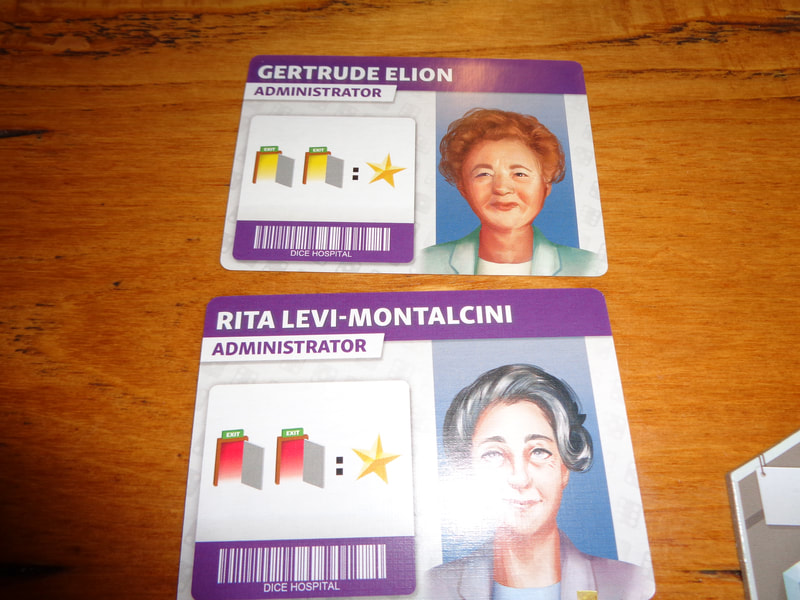
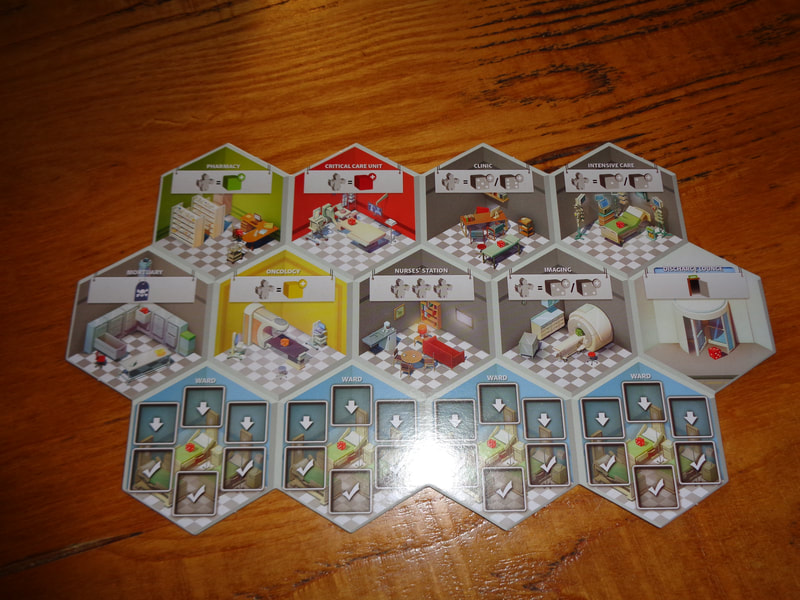
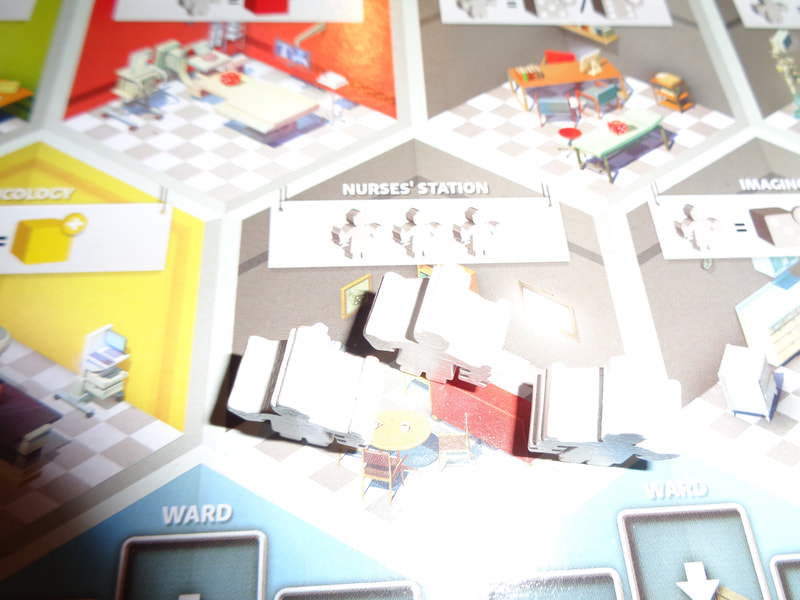
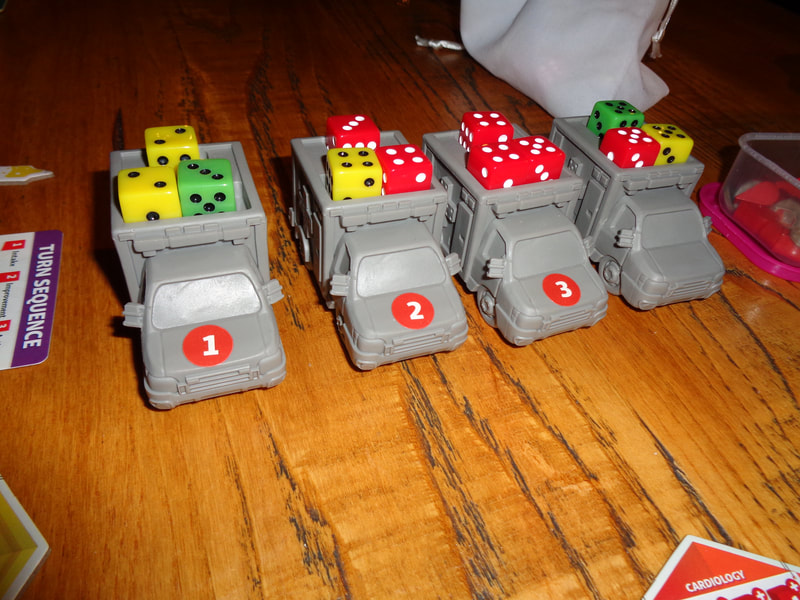
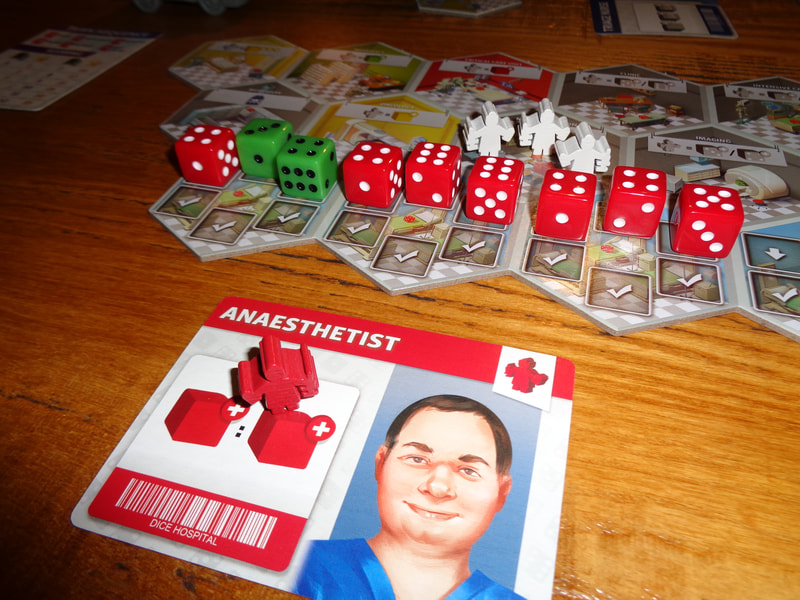
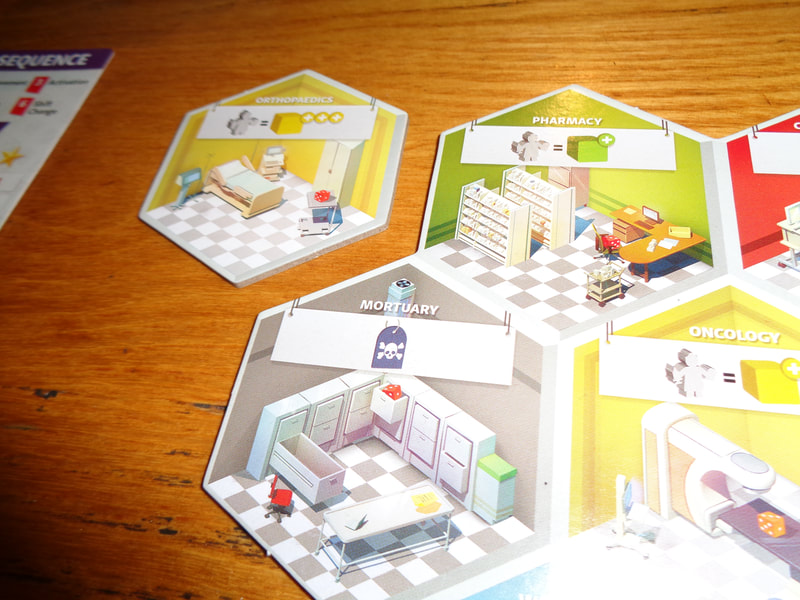
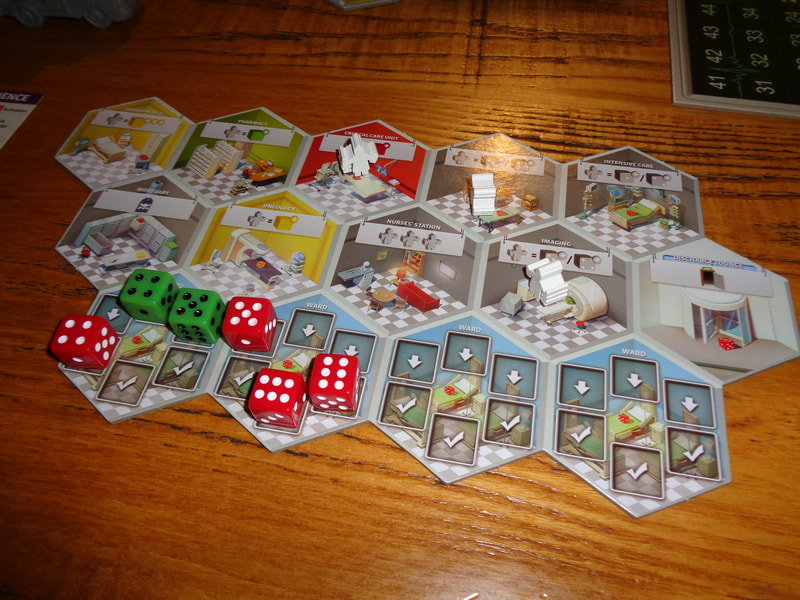
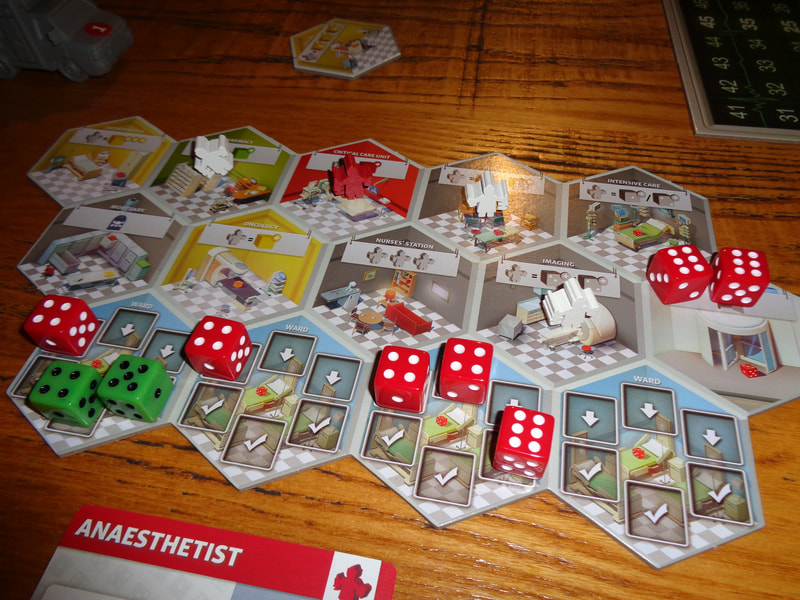
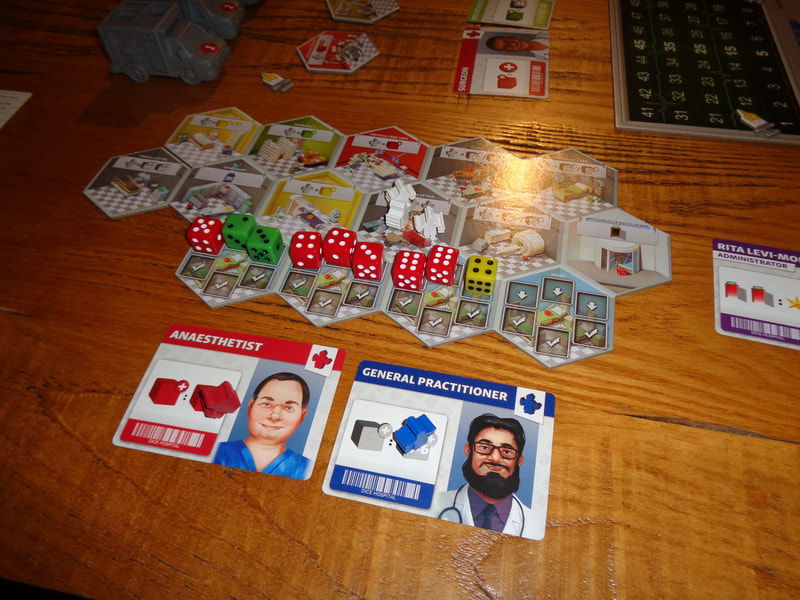
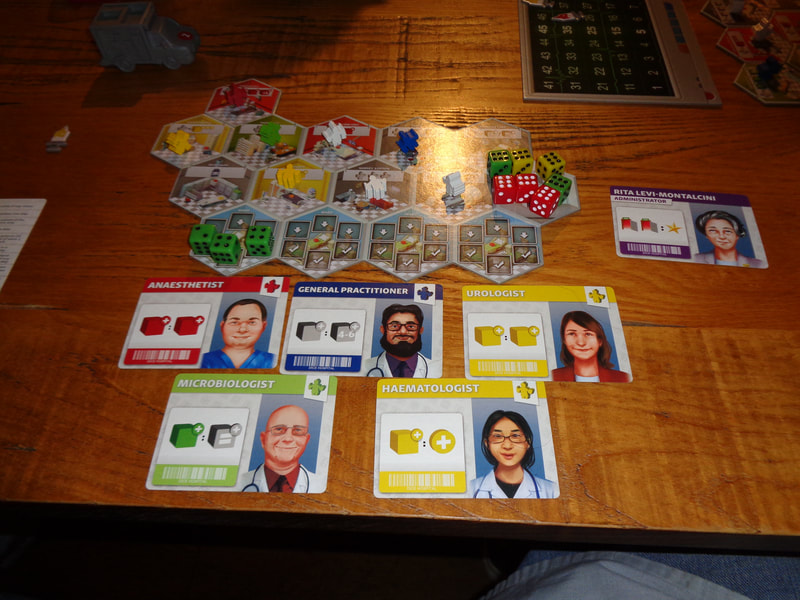
 RSS Feed
RSS Feed
